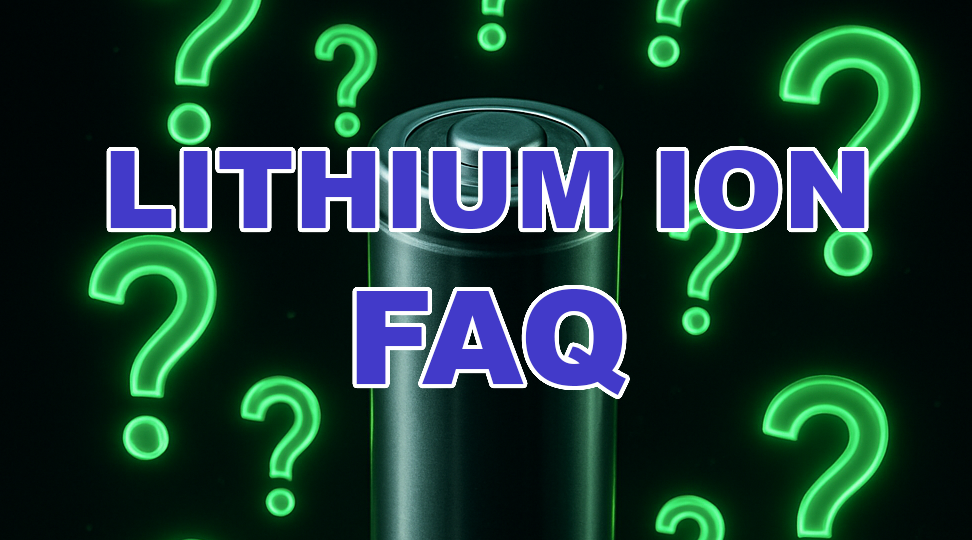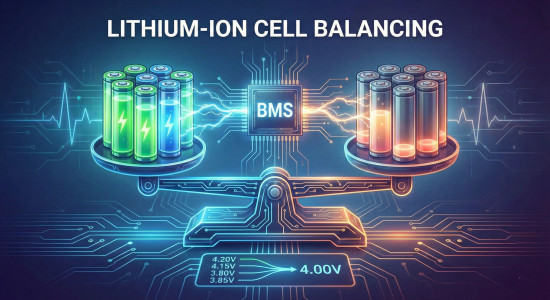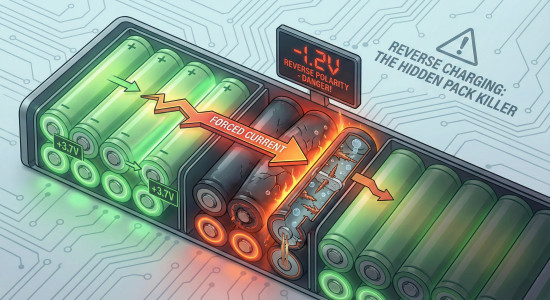
Lithium-Ion Batteries: Uses, Safety, and Fire Prevention Guide
Table of Contents
What Is Lithium Ion Used For?
Lithium ion batteries are pretty much used for everything portable these days. Anything that needs a rechargeable battery, like phones, laptops, tablets, cameras, headphones, wearables, handheld game consoles, power tools, e-bikes and scooters, drones, backup power banks, and even electric cars and home battery packs, these days. Lithium ion has an extremely high energy density chemistry, and it has the ability to be recharged hundreds, two thousands of times depending on which chemistry you're using, and that's why it shows up absolutely everywhere.
Beyond consumer electronics, lithium ion shows up in cordless home appliances, medical devices, stationary energy storage for solar and grid backup, and even aerospace and marine applications. Its popularity comes from the balance of energy density, power capability, low self-discharge, and flexible shapes (pouch, prismatic, cylindrical), which let designers fit more battery into thinner, lighter products.
Are Lithium Ions Safe?
The short answer is yes. When they are used, charged, and stored as intended, completely properly, they are totally safe. The risk comes from abuse or defects. If a cell is crushed, punctured, overheated, over-currented, used with the wrong charger without a BMS, or the BMS is bypassed on discharge and they're over-currented, they can trigger things like thermal runaway, which is an overheating that feeds on itself, and it could cause the battery pack to catch on fire.
Most reputable packs and devices go through safety standards and shipping tests (like UN transportation testing and product safety listings) and include protection circuits that reduce risk in normal use. Practical habits help too: keep batteries out of hot cars, don’t cover devices while charging, avoid visibly damaged or swollen packs, and stick to compatible, certified chargers and cables.
What Does Lithium Ion do to Your Body?
The answer is nothing if you're using them in anything close to a normal manner. The cells are safe and totally sealed. If a battery vents, leaks, or burns, then the electrolyte and smoke can be a totally different story. That can irritate your eyes, your skin, and, even worse, your lungs. The smoke from a burning pack is really nasty.
If you’re ever exposed to vented electrolyte or smoke, move to fresh air immediately. Avoid touching residues; if it gets on skin or in eyes, rinse with plenty of water for at least 15 minutes and seek medical advice. If symptoms like coughing, shortness of breath, or eye irritation persist, contact emergency services or poison control.
What's the Difference Between Lithium and Lithium Ion?
Lithium is an element, which is a soft, highly reactive metal. In the context of lithium ion batteries, instead of metallic lithium, it's lithium ions that shuttle between a carbon anode and a metal oxide or phosphate cathode. Variants like lithium polymer and lithium ion phosphate are still lithium ion, but none of those things contain metallic lithium.
A useful way to think about it: “lithium” (metal) often refers to primary, non-rechargeable coin cells you might find in watches or remotes, while “lithium ion” refers to rechargeable chemistries used in most modern gadgets. Never attempt to recharge a primary lithium metal cell, and don’t expose metallic lithium to water—it reacts vigorously.
Do Cell Phones Have Lithium Batteries?
Absolutely. All modern cell phones are powered by lithium ion batteries that have built-in protection circuits. Lithium ion gives the best combination of thinness, capacity, and rechargeability compared to any other battery technology on the planet. It's pretty much the only batteries that can be used in smartphones, and smartphones basically wouldn't exist without lithium ion batteries.
Because phone batteries are tightly integrated with the device’s charging system and thermal design, replacements should be high-quality and properly matched. Signs of trouble include swelling, sudden shutdowns, or excessive heat while charging; if you see those, stop using the device and get the battery professionally evaluated or replaced.
How Can You Prevent Lithium Battery Fires?
The first step is to buy a quality battery, or, if you're building a battery, do quality testing on the cells and build the battery in a quality manner with quality connections. Avoid the absolute cheapest stuff. That's the easiest way to do it. If you're looking at a battery and it's the absolute cheapest one that you can find, don't buy that one. Just buy the next most expensive one, and that will probably save you most of the trouble in this phase.
The general rule of thumb is don't buy any lithium ion battery that is an entire battery pack and is sold in the thousands of milliamp hours, unless it's an RC battery pack. Only RC battery packs are going to be real battery packs that advertise the thousands of milliamp hours, like 6,000 milliamp hours, 10,000 milliamp hours. Generally, if you see something that says 100,000 milliamp hours and they're claiming 100 amp hours, it's absolutely not the case. E-bike batteries that are sold in the milliamp hours are almost always scam fake counterfeit batteries.
Regardless of whether you buy or build, there are definitely some other things that you can do.
Make sure that the charger voltage is no higher than the max safe voltage of the battery.
If you have a 36 volt lithium ion battery, the max charge voltage for that is 42 volts. With the charger unplugged from the battery, take a multimeter and test the voltage of the charger. It should read no higher than 42 volts. If it's any higher, then it will overcharge the battery without the BMS's intervention. Sure, the BMS can prevent overcharging by disconnecting the charging when any one cell group reaches a maximum threshold, but that means you're depending on a 10- to 50-dollar BMS as your very last line of defense. And that's highly disavowed.
Don't charge the battery faster than it should be charged.
Look at the ratings on the battery. If it says that it can take a 5 amp charge, well, feel the side of the battery or the cells if you have access to them and see how hot it's getting at 5 amps. If it's lukewarm after charging for an hour straight at 5 amps, you can probably turn the charge current up a little bit. If it's burning hot, then, regardless of what the label says, you probably need to turn the charge current down.
Don't bypass the discharge port of a BMS to get more power out of a battery.
That's one of the leading ways battery fires are caused. And even if you don't bypass the BMS, you could still possibly draw too much current from your battery because the BMS is just one line of defense. The cells themselves actually have their own internal limits. So if you have a hundred amp BMS but your cell groups can only support 40 amps, well, you don't have to bypass your BMS to put yourself at fire risk. So feel the battery under intense discharge. Like run it from full charge all the way down and feel the battery. If it's burning hot and too hot to touch or just very, very hot and uncomfortably hot, you know, then you're drawing too much power for the battery. So you either need a bigger battery or turn the power down on your controller or use a smaller motor or something. And if you go by that, then you'll almost definitely never have a battery fire as a result of discharging too much current for your battery. It will tell you from how hot it's getting if it's having a hard time.
Take your e-bike battery and draw one amp from it for an hour. See what happens. It's probably going to be undetectably warmer, maybe just barely across the threshold of detectable, because that's just one amp across maybe four or six, eight P, depending on how big your battery is. Then go up from there. You'll see it gets hotter. So if you don't stress out the battery, it can't burst into flames from being stressed out.
Dispose of lithium ion batteries properly
For everyday safety, store packs in a cool, dry place away from flammables, avoid charging unattended or on soft surfaces, and use enclosures/holders that protect against crushing and short circuits. For long storage, a partial state of charge is kinder to the cells. Recycle at approved collection points (many home-improvement and electronics stores accept them). If a pack is damaged, swelling, or has been submerged, isolate it in a non-flammable area and consult a professional; if a fire starts, prioritize getting people clear and call emergency services.
If you throw away even a half charged e-bike battery and then the garbage truck comes and gets it and throws it in the back, and a couple streets later compresses it down, it's literally going to burst into flames, and they'll probably trace it back to the house that it came from, and you'll be responsible for that. So you should probably consider that.
What if the garbage man is in just the wrong position and the battery explodes and sends a piece of shrapnell directly into his eye which causes him to be rushed to the hospital where he is initially stabilized but later dies of an infection. Then what are you gonna do? Spend the rest of your life in prison, that's what you’re gonna do, and those kids are gonna grow up without a father. So you should probably consider that.
Conclusion
Lithium-ion powers almost everything portable—from phones and laptops to e-bikes, power tools, EVs, and home storage—because it’s light and energy-dense. It’s safe when used as intended, but abuse, defects, or excess heat can cause problems, so rely on protection circuits, sane charging, and keep an eye on temps. Normal use doesn’t expose you to chemicals; if a pack vents, get fresh air and rinse—irritation is possible. Remember: lithium metal (non-rechargeable) ≠ lithium-ion (rechargeable), phones all use lithium-ion, and to prevent fires match charger voltage/current, don’t bypass the BMS, and recycle batteries properly instead of tossing them in the trash.
Well, that about wraps it up for these common lithium ion related questions. Thanks for reading!


